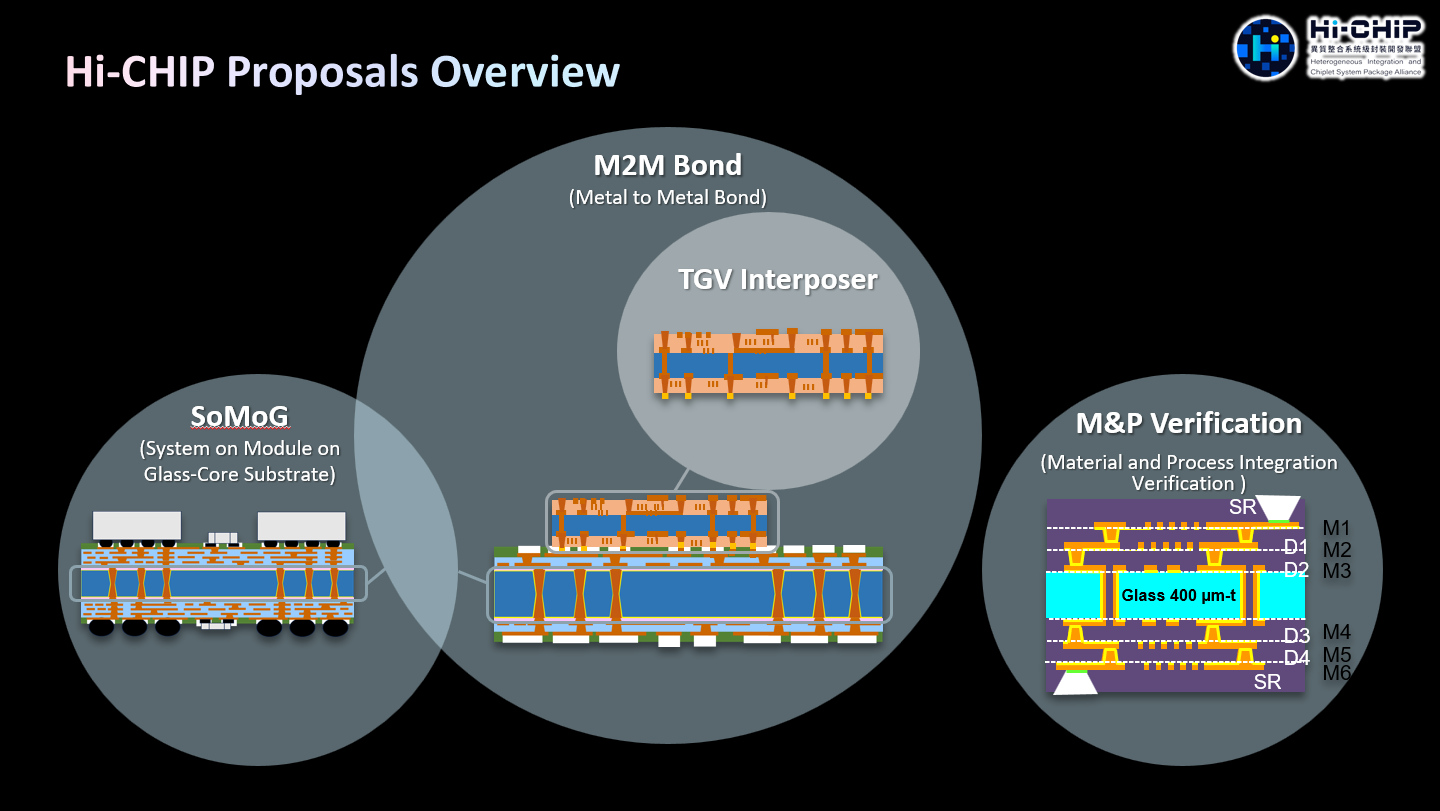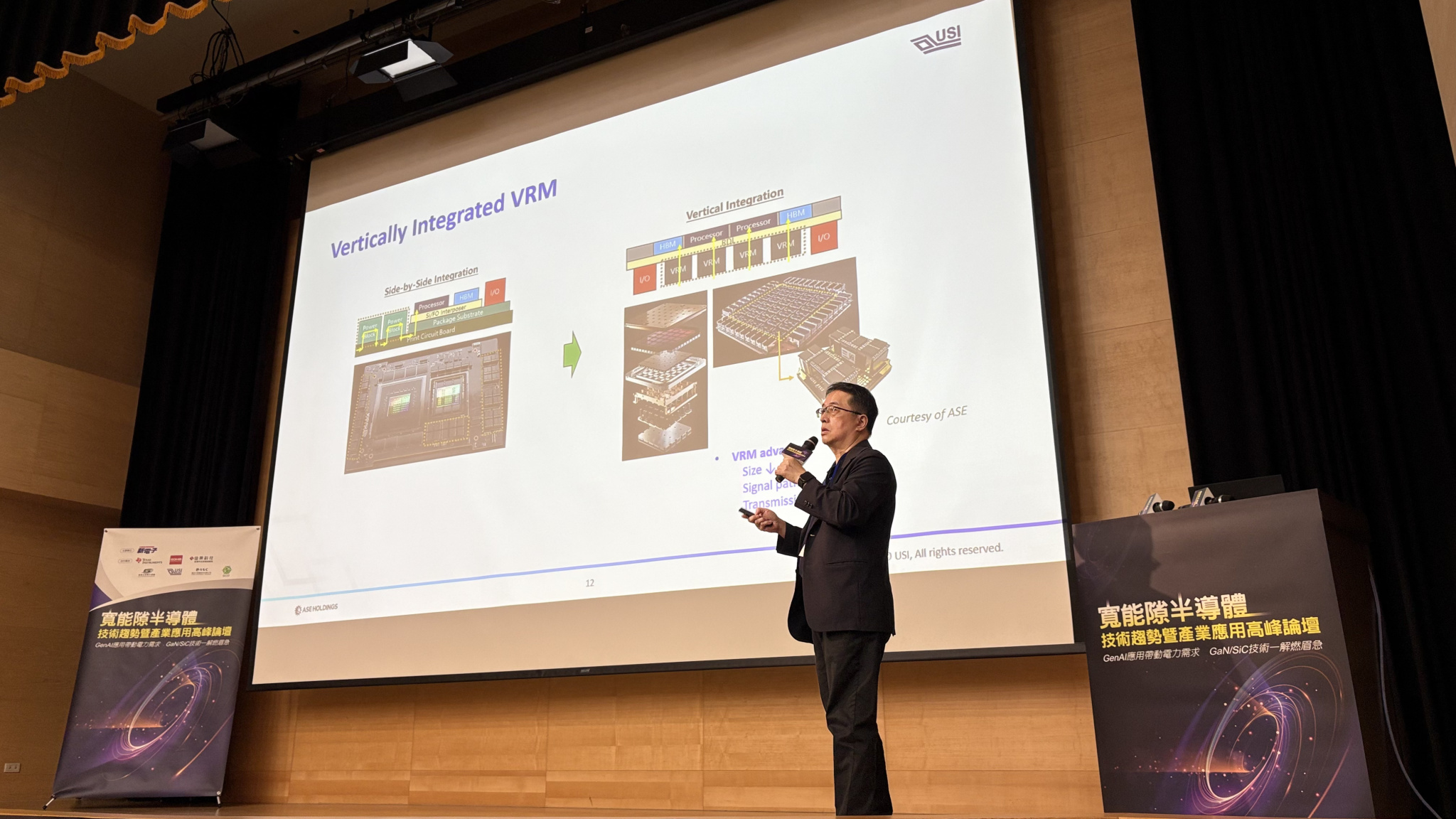Search
- 08/16/2023
Automotive SiP Module: Paving the Way for the Smart Cockpit Revolution
In the rapidly growing automotive industry, car electrical technology improvements have been pushing the conversion of automobiles into smart and interconnected appliances. One of the most notable inventions in this respect is the enactment of intelligent cockpits, which have revolutionized the driving understanding for motorists and passengers.
After the seamless integration of cutting-edge functionalities in these smart cockpits, an obscure yet strong driving force - the automotive SiP module. The SiP (System in Package) Module is at the heart of this transformation, a revolutionary technology reshaping the landscape of car electronics. We will delve into how the Automotive SiP Module drives the evolution of smart cockpits and revolutionizes the automotive electronics industry.
What Are Smart Cockpits?
Smart cockpits are the next generation of car interiors, designed to offer a seamless, intuitive, and connected driving experience. They integrate advanced technologies, such as digital displays, touchscreens, voice recognition, and AI-powered assistants, to create an interactive and personalized environment for drivers and passengers.
Automotive SiP Module: what enabling Smart Cockpits
Automotive electronics play a pivotal role in the development of smart cockpits. These electronics enable the integration of various components, allowing for the seamless exchange of data and information between different systems, resulting in a cohesive and intelligent driving environment. The Automotive SiP Module is at the forefront of driving advancements in automotive electronics. It combines multiple chips and components into a single package, providing the computing power and efficiency required to operate smart cockpits.
To enable Smart Cockpits, why Automotive SiP Modules?
Automotive Electronics Centralization
The Automotive Electronics Centralization function of the SiP module is responsible for creating a unified and interconnected system within the smart cockpit. By centralizing automotive electronics, the SiP module fosters seamless data sharing and communication between different smart cockpit features. This connectivity allows for the swift exchange of information among various systems, such as infotainment, navigation, ADAS, and climate control, resulting in a cohesive and integrated “smart cockpit”. Moreover, the centralization of electronics streamlines maintenance and diagnostics processes, making it easier for mechanics to identify and resolve issues efficiently.
Learn More: Automotive Electronics: How are the preparations for the next tech revolution?
Sensor Fusion and Perception
Another vital component in smart cockpits is Sensor Fusion and Perception. This function combines data from various sensors to create a comprehensive and real-time perception of the vehicle's surroundings. The sensors can be cameras, LiDAR, radar, and ultrasonic sensors, for those you can name it.
It is the sensor data processed by the Automotive Computing Module that enables the Advanced Driver Assistance System (ADAS) to accurately determine driving commands and thus realize functions such as Lane-Keeping Assistance, Automatic Emergency Braking and Adaptive Cruise Control. The sensing and perception functions also lay the foundation for future autonomous driving functions in future smart cockpit designs.
Learn More: Fleet management: Invisible Hands Drive Your Team Wisely
Connectivity and Communication
The smart cockpits also incorporate advanced Connectivity and Communication features. This function enables seamless integration with external devices, cloud services, and the internet, providing occupants with a range of connected services and entertainment options. Whether it's real-time traffic updates, over-the-air software updates, or voice-activated virtual assistants, the NAD (Network Access Device) SiP module ensures that the smart cockpit is always connected and up to date with the latest technologies and services.
Challenges and Solutions for Automotive SiP Module
In summary, Automotive SiP Modules are poised to change the market landscape for the automotive industry, but like any revolutionary technology, there are challenges in production and application. Let us take a closer look at the hurdles the development team faces when developing automotive SiP modules, and USI will suggest the following solutions about how we overcome them.
Challenge 1: Complex Integration and Miniaturization
Designing SiP modules requires intricate integration of multiple chips and components into a single package. As smart cockpits evolve with more advanced features, engineers face the challenge of arranging various functions within limited space. Modulization is essential to maintain the sleek design and functionality of smart cockpits while accommodating the complex configuration of the system should be considered.
Solution: Advanced Packaging Techniques
To overcome this challenge, manufacturers are turning to cutting-edge SiP module manufacturing techniques. These techniques enable higher levels of miniaturization and integration, allowing for tighter component placements and minimizing the overall size of the module. As a result, space constraints are addressed without compromising the module's performance.
Learn More: System in Package (SiP) for Miniaturization: Turnkey Solution We Offer
Challenge 2: Signal Integrity and Electromagnetic Interference (EMI)
The components within the SiP module can lead to signal interference and degradation, affecting the performance of smart cockpit features. Additionally, Electromagnetic Interference (EMI) may arise due to the compact layout, potentially impacting the module's stability.
Solution: EMI Shielding and Signal Routing Techniques
Engineers use EMI shielding materials and advanced signal routing techniques to ensure optimal signal integrity and minimize EMI. Considering the layout carefully and using ground planes and signal traces helps reduce signal interference and provides smooth data exchange between different components.
Challenge 3: Cost Optimization
While SiP modules offer numerous benefits, their complex design and manufacturing can result in higher production costs. Striking a balance between the advantages of SiP technology and cost-effectiveness becomes a crucial concern while conducting a SiP module project.
Solution: Design Optimization and Material Selection
To address cost optimization, manufacturers streamline the SiP module's design and carefully select cost-effective yet reliable materials. Collaborating with semiconductor suppliers and optimizing the supply chain also reduces production costs.
USI collaborates closely with automotive SoC solution providers to advance smart cockpit systems. By leveraging the solutions above, USI has reduced automotive compute module size while ensuring high DDR operational speed. The modular design minimizes mainboard footprint, enhancing computational performance and smart cockpit system quality and efficiency.
Embracing automotive compute modules streamlines carmakers' focus on mainboard development, saving on research and development costs. This approach reduces mainboard costs for manufacturers and facilitates high-density PCB designs within smaller module areas.
Our approach includes advanced underfill, BGA (Ball Grid Array) mounting, embedded passive components, and high-density SMT (Surface Mount Technology) in module development. Modules feature critical control components like System-on-Chips (SoCs), dynamic random-access memory (DDR), and power management integrated circuits (PMICs), operating independently of the mainboard.
What you can expect from the Smart Cockpit in the near future
In the near future, every car owner will be able to enjoy a comfortable traveling experience from the smart cockpit, and to realize such a future, Automotive SiP Modules are indispensable. This innovative module is reshaping the automotive industry by enhancing the user experience, optimizing space, and driving advancements in automotive electronics. Here are a few aspects that can no longer be just an imagination:
Enhanced User Experience
Undoubtedly, the SiP module's ability to integrate the vehicle's electrical functions further enhances the user experience in the smart cockpit, ensuring seamless interaction with the entertainment system, navigation, and other smart functions. With intuitive control and quick access to information, your driving journey becomes more enjoyable and personalized.
Integration of AI and Machine Learning
With the SiP module's computing power, smart cockpits will increasingly incorporate edge computing, AI, and machine learning capabilities. This exciting integration will lead to personalized driving experiences tailored to your preferences and habits. From predictive maintenance for proactive vehicle care to enhanced safety features adapting to individual driving patterns, AI will redefine how you interact with your car. In other words, by centralizing and processing data, the smart cockpit central system can provide a safer driving environment.
Learn More: From Latency to Efficiency: Exploring the Application Scenarios of Edge Computing Servers
Seamless Connectivity and 5G
Embracing the power of 5G technology, smart cockpits will seamlessly connect with external devices and cloud-based services. This level of connectivity will enable real-time updates for navigation, entertainment, and vehicle data, creating a truly connected driving experience. With wealth of entertainment options, your journeys will be more enjoyable and entertaining than ever before.
Learn More: USI Advanced 5G Turnkey Services & Two Challenges You Need to Overcome When Developing 5G Products
As a catalyst for these advances, automotive SiP modules highlight the importance of automotive technology. The smart cockpit will become more advanced and intuitive, tailored to your every mobility need. With increased safety, internet connectivity, and personalized driving settings, the electric vehicle of the future is no longer just a vehicle, but a personalized, high-tech product. The smart cockpit will change your driving experience and work with you toward every comfortable journey.
FAQs
1. What are smart cockpits, and how do they enhance the driving experience?
Smart Cockpit integrates advanced features such as digital information display, touch screen, voice recognition, and AI assistant to provide an intuitive and high-speed connected driving experience. These are used to personalize the driving experience with in-vehicle computing modules that provide a rich variety of entertainment options, revolutionizing the way modern drivers interact with their cars.
2. What are the applications of Automotive SiP Modules in Smart Cockpit?
Automotive SiP Moules are mainly applied to the automotive electronics centralization, sensor fusion and perception technology, and connectivity and communication systems in the smart cockpit, to enhance the safety and entertainment of vehicle travel from three aspects, and at the same time provide more personalized choices in the cabin for each car owner.
3. What are the challenges in producing Automotive Compute SiP Modules, and how are they addressed?
To produce automotive SiP modules, the challenges include complex integration, signal integrity, electromagnetic interference and cost optimization for miniaturization. Solutions include advanced packaging technologies, electromagnetic masks, and design optimization and material selection. To be able to execute the solutions properly, the development team must also have extensive experience in advanced packaging technologies.
4. What benefits do automotive compute modules offer for carmakers?
Adopting automotive compute modules allows carmakers to focus on mainboard development, reducing development time, research, and development costs. It also facilitates high-density PCB designs within smaller module areas.
5. What enhancements can we expect in the near future from smart cockpits?
The near future promises enhanced user experiences, improved safety and connectivity, AI and machine learning integration, and seamless connectivity with 5G technology for real-time updates and entertainment options.
Contact USI Design Team here if you require more professional details.
After the seamless integration of cutting-edge functionalities in these smart cockpits, an obscure yet strong driving force - the automotive SiP module. The SiP (System in Package) Module is at the heart of this transformation, a revolutionary technology reshaping the landscape of car electronics. We will delve into how the Automotive SiP Module drives the evolution of smart cockpits and revolutionizes the automotive electronics industry.
What Are Smart Cockpits?
Smart cockpits are the next generation of car interiors, designed to offer a seamless, intuitive, and connected driving experience. They integrate advanced technologies, such as digital displays, touchscreens, voice recognition, and AI-powered assistants, to create an interactive and personalized environment for drivers and passengers.
Automotive SiP Module: what enabling Smart Cockpits
Automotive electronics play a pivotal role in the development of smart cockpits. These electronics enable the integration of various components, allowing for the seamless exchange of data and information between different systems, resulting in a cohesive and intelligent driving environment. The Automotive SiP Module is at the forefront of driving advancements in automotive electronics. It combines multiple chips and components into a single package, providing the computing power and efficiency required to operate smart cockpits.
To enable Smart Cockpits, why Automotive SiP Modules?
Automotive Electronics Centralization
The Automotive Electronics Centralization function of the SiP module is responsible for creating a unified and interconnected system within the smart cockpit. By centralizing automotive electronics, the SiP module fosters seamless data sharing and communication between different smart cockpit features. This connectivity allows for the swift exchange of information among various systems, such as infotainment, navigation, ADAS, and climate control, resulting in a cohesive and integrated “smart cockpit”. Moreover, the centralization of electronics streamlines maintenance and diagnostics processes, making it easier for mechanics to identify and resolve issues efficiently.
Learn More: Automotive Electronics: How are the preparations for the next tech revolution?
Sensor Fusion and Perception
Another vital component in smart cockpits is Sensor Fusion and Perception. This function combines data from various sensors to create a comprehensive and real-time perception of the vehicle's surroundings. The sensors can be cameras, LiDAR, radar, and ultrasonic sensors, for those you can name it.
It is the sensor data processed by the Automotive Computing Module that enables the Advanced Driver Assistance System (ADAS) to accurately determine driving commands and thus realize functions such as Lane-Keeping Assistance, Automatic Emergency Braking and Adaptive Cruise Control. The sensing and perception functions also lay the foundation for future autonomous driving functions in future smart cockpit designs.
Learn More: Fleet management: Invisible Hands Drive Your Team Wisely
Connectivity and Communication
The smart cockpits also incorporate advanced Connectivity and Communication features. This function enables seamless integration with external devices, cloud services, and the internet, providing occupants with a range of connected services and entertainment options. Whether it's real-time traffic updates, over-the-air software updates, or voice-activated virtual assistants, the NAD (Network Access Device) SiP module ensures that the smart cockpit is always connected and up to date with the latest technologies and services.
USI Capability in Automatic MFG Line for AE NAD Modules
Challenges and Solutions for Automotive SiP Module
In summary, Automotive SiP Modules are poised to change the market landscape for the automotive industry, but like any revolutionary technology, there are challenges in production and application. Let us take a closer look at the hurdles the development team faces when developing automotive SiP modules, and USI will suggest the following solutions about how we overcome them.
Challenge 1: Complex Integration and Miniaturization
Designing SiP modules requires intricate integration of multiple chips and components into a single package. As smart cockpits evolve with more advanced features, engineers face the challenge of arranging various functions within limited space. Modulization is essential to maintain the sleek design and functionality of smart cockpits while accommodating the complex configuration of the system should be considered.
Solution: Advanced Packaging Techniques
To overcome this challenge, manufacturers are turning to cutting-edge SiP module manufacturing techniques. These techniques enable higher levels of miniaturization and integration, allowing for tighter component placements and minimizing the overall size of the module. As a result, space constraints are addressed without compromising the module's performance.
Learn More: System in Package (SiP) for Miniaturization: Turnkey Solution We Offer
Challenge 2: Signal Integrity and Electromagnetic Interference (EMI)
The components within the SiP module can lead to signal interference and degradation, affecting the performance of smart cockpit features. Additionally, Electromagnetic Interference (EMI) may arise due to the compact layout, potentially impacting the module's stability.
Solution: EMI Shielding and Signal Routing Techniques
Engineers use EMI shielding materials and advanced signal routing techniques to ensure optimal signal integrity and minimize EMI. Considering the layout carefully and using ground planes and signal traces helps reduce signal interference and provides smooth data exchange between different components.
Challenge 3: Cost Optimization
While SiP modules offer numerous benefits, their complex design and manufacturing can result in higher production costs. Striking a balance between the advantages of SiP technology and cost-effectiveness becomes a crucial concern while conducting a SiP module project.
Solution: Design Optimization and Material Selection
To address cost optimization, manufacturers streamline the SiP module's design and carefully select cost-effective yet reliable materials. Collaborating with semiconductor suppliers and optimizing the supply chain also reduces production costs.
USI collaborates closely with automotive SoC solution providers to advance smart cockpit systems. By leveraging the solutions above, USI has reduced automotive compute module size while ensuring high DDR operational speed. The modular design minimizes mainboard footprint, enhancing computational performance and smart cockpit system quality and efficiency.
Embracing automotive compute modules streamlines carmakers' focus on mainboard development, saving on research and development costs. This approach reduces mainboard costs for manufacturers and facilitates high-density PCB designs within smaller module areas.
Our approach includes advanced underfill, BGA (Ball Grid Array) mounting, embedded passive components, and high-density SMT (Surface Mount Technology) in module development. Modules feature critical control components like System-on-Chips (SoCs), dynamic random-access memory (DDR), and power management integrated circuits (PMICs), operating independently of the mainboard.
What you can expect from the Smart Cockpit in the near future
In the near future, every car owner will be able to enjoy a comfortable traveling experience from the smart cockpit, and to realize such a future, Automotive SiP Modules are indispensable. This innovative module is reshaping the automotive industry by enhancing the user experience, optimizing space, and driving advancements in automotive electronics. Here are a few aspects that can no longer be just an imagination:
Enhanced User Experience
Undoubtedly, the SiP module's ability to integrate the vehicle's electrical functions further enhances the user experience in the smart cockpit, ensuring seamless interaction with the entertainment system, navigation, and other smart functions. With intuitive control and quick access to information, your driving journey becomes more enjoyable and personalized.
Integration of AI and Machine Learning
With the SiP module's computing power, smart cockpits will increasingly incorporate edge computing, AI, and machine learning capabilities. This exciting integration will lead to personalized driving experiences tailored to your preferences and habits. From predictive maintenance for proactive vehicle care to enhanced safety features adapting to individual driving patterns, AI will redefine how you interact with your car. In other words, by centralizing and processing data, the smart cockpit central system can provide a safer driving environment.
Learn More: From Latency to Efficiency: Exploring the Application Scenarios of Edge Computing Servers
Seamless Connectivity and 5G
Embracing the power of 5G technology, smart cockpits will seamlessly connect with external devices and cloud-based services. This level of connectivity will enable real-time updates for navigation, entertainment, and vehicle data, creating a truly connected driving experience. With wealth of entertainment options, your journeys will be more enjoyable and entertaining than ever before.
Learn More: USI Advanced 5G Turnkey Services & Two Challenges You Need to Overcome When Developing 5G Products
As a catalyst for these advances, automotive SiP modules highlight the importance of automotive technology. The smart cockpit will become more advanced and intuitive, tailored to your every mobility need. With increased safety, internet connectivity, and personalized driving settings, the electric vehicle of the future is no longer just a vehicle, but a personalized, high-tech product. The smart cockpit will change your driving experience and work with you toward every comfortable journey.
FAQs
1. What are smart cockpits, and how do they enhance the driving experience?
Smart Cockpit integrates advanced features such as digital information display, touch screen, voice recognition, and AI assistant to provide an intuitive and high-speed connected driving experience. These are used to personalize the driving experience with in-vehicle computing modules that provide a rich variety of entertainment options, revolutionizing the way modern drivers interact with their cars.
2. What are the applications of Automotive SiP Modules in Smart Cockpit?
Automotive SiP Moules are mainly applied to the automotive electronics centralization, sensor fusion and perception technology, and connectivity and communication systems in the smart cockpit, to enhance the safety and entertainment of vehicle travel from three aspects, and at the same time provide more personalized choices in the cabin for each car owner.
3. What are the challenges in producing Automotive Compute SiP Modules, and how are they addressed?
To produce automotive SiP modules, the challenges include complex integration, signal integrity, electromagnetic interference and cost optimization for miniaturization. Solutions include advanced packaging technologies, electromagnetic masks, and design optimization and material selection. To be able to execute the solutions properly, the development team must also have extensive experience in advanced packaging technologies.
4. What benefits do automotive compute modules offer for carmakers?
Adopting automotive compute modules allows carmakers to focus on mainboard development, reducing development time, research, and development costs. It also facilitates high-density PCB designs within smaller module areas.
5. What enhancements can we expect in the near future from smart cockpits?
The near future promises enhanced user experiences, improved safety and connectivity, AI and machine learning integration, and seamless connectivity with 5G technology for real-time updates and entertainment options.
Contact USI Design Team here if you require more professional details.
Keep up with top trending topic
For the latest innovation technology, application
and industry insight.
Subscribe Our Blog
For the latest innovation technology, application
and industry insight.














